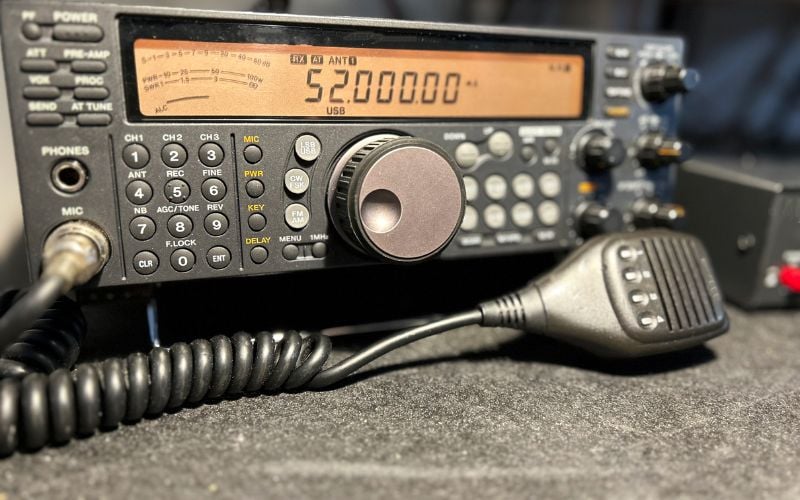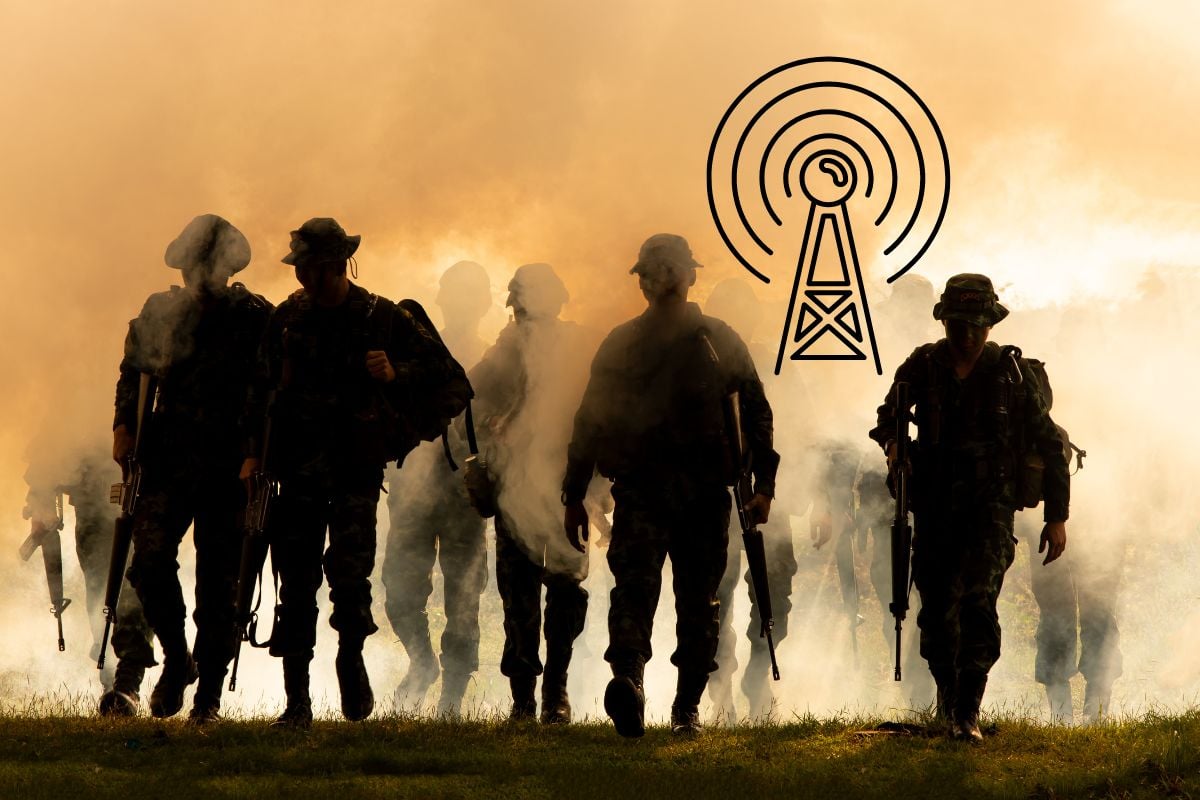Throughout history, wireless technologies have not only impacted how we consume news and entertainment. They have also played an essential role in the communication strategies of soldiers and military groups, particularly in times of war.
If we look back in the annals of radio history, we can see that some of the very first radios were specifically designed for critical communications.
Radios were originally used to send transmissions between government and military groups. Signals on different frequencies coordinated troop movements, initiated orders and transmitted vital information.
Radio communication has also made an impact in the military landscape as a method of gathering information. By tuning in to radio transmissions from the “other side” of the war, military groups could essentially track their enemies’ movements.
Although military technology has come a long way over the decades, all indications are that radio still plays an important role. Today we will look at how radios influenced the course of the recent wars in Ukraine and Russia.
Ukraine, Russia and electronic warfare

Electronic warfare has become a core component of modern warfare and has a powerful impact on the outcome of large-scale conflicts.
While radio transmissions have long played a role in the military landscape, the use of these tools has increased significantly in recent years.
Battles can be won or lost based on one country’s ability to overcome another’s technological advantages.
Radio frequency technologies, from radar to tactical radios and navigation systems, are critical to the movement and management of military forces.
As a result, radio-electronic warfare has become a critical component in the degradation of enemy combat systems, even in the Ukraine and Russia wars.
For example, Russian forces in Ukraine have grounded unmanned aerial systems in Ukraine by jamming and falsifying signals required by the SDRs in those tools.
This previously rendered Ukrainians unable to provide aerial surveillance and intelligence. The Russians also attempted to jam air defense radars, frustrating command and control efforts.
At the same time, Ukrainian troops have leveraged their electronic warfare strategies. For example, the country’s armed forces have used United States-supplied jamming systems to thwart Russian tactical communications.
Unable to use single-channel ground and air systems for radio communications, the Russians have often relied on unencrypted radio systems and cell phones, making them more vulnerable to Ukrainian exploitation.
Ukrainian forces were also able to exploit the weaknesses of larger, more powerful electronic warfare systems deployed by the Russians.
Teams have intercepted and detected transmissions from known military instruments such as the Krasukha-4 and Leer-3.
The unsecured radios of the Russian troops
The most surprising thing about the Ukraine-Russia war is how ill-prepared the Russians appeared from a technological point of view.
Russia is considered one of the most advanced countries in the world, especially in terms of espionage and military technology. Russia’s head of state Vladimir Putin, a former secret service officer, is particularly proud of this.
However, the communication strategies of the Russian troops in Ukraine have yet to live up to expectations.

Although Russia has revamped and improved its military technology over the past few decades, focusing on modernizing its communications hardware, they have had difficulty introducing new solutions into their efforts inside Ukraine.
In particular, many Russian military transmissions have been almost entirely over unsecured lines.
Even amateur radio enthusiasts could tune into Russian broadcasts online through sites like Web SDR. Some of these broadcasts were even shared on social media and in press releases, revealing the frustration of Russian troops.
First and foremost, the Russians appear to have relied heavily on high frequency radio signals and cell phones for communications, which opened the door for Ukrainian forces to intervene and listen in on broadcasts.
Russian commanders have also shown great difficulty orchestrating communications across such a vast battlefield.
Troops are deployed in one of the largest countries in Europe, presenting significant challenges to military planners who need to ensure radios are operating on the right frequencies.
Since the beginning of the war, Ukrainian volunteers have been able to overhear much of the military radio traffic between Russian troops.
There is even some anecdotal evidence that these unsecured communications resulted in significant battlefield casualties.
For example, a Russian general was reportedly killed in an airstrike after Ukrainians detected his cell phone signal.
In another example, reported by Ukraine’s Defense Ministry, two Russian intelligence officials were heard discussing how difficult it was for them to contact each other on the battlefield.
How the Ukrainian troops intercepted the Russians

While not all Russian communications in Ukraine are unencrypted, evidence at the time of writing (March 2023) indicates that Russian troops may have been lax in their use of radio and cellular technologies.
One striking image from the Russian war in Ukraine showed a handheld radio operated by a Russian troop.
The radio was a basic BaoFeng UV-82HP radio operating in the V/UHF waveband without military-grade encryption.
By using handheld radios without encryption, the Russians essentially exposed themselves to any Ukrainian volunteer or radio enthusiast who was able to find the frequency they were transmitting.
Transmissions from radios like these can be detected relatively easily with rudimentary communications reconnaissance equipment.
Even many radio amateurs know how to scan frequencies to find communications.
Once transmissions are detected in a radio system, they can also be used to track the movement of Russian troops.
To make matters worse, in addition to simple radio systems, many Russians also use their own mobile phones and smartphones, which were brought to the Ukraine.
When the Ukrainians found out the Russians were using their cell phones, they cut Russian phone numbers from their network, meaning the troops could no longer use their phones.
Russian troops began confiscating cellphones from Ukrainian civilians to address this problem. However, the Ukrainian government has urged citizens to provide the military with information about stolen mobile phones so that these products can be turned into listening devices for troops.
As a result, Ukrainians were able to use a combination of radio frequency technology and cellular technology to gain a valuable advantage in intelligence.
Ukraine’s continued investment in radio
Although the Russians may have had an advantage from a technological point of view in entering the Ukraine war, they may not have used it properly.
At the same time, Ukraine has continued to invest in its ability to gather Russian intelligence. The country has received significant help from the United States and other NATO countries, particularly in developing jamming devices and SDR radio technologies.
SDRs (Software-Defined Radios) have historically been critical to electronic warfare because they receive and transmit data over a wide tuning range, using different channels, network capabilities, and high bandwidth.
SDR solutions can be designed to meet the needs of different parts of the radio spectrum, making them ideal for surveillance and reconnaissance.
They can also be embedded in amplifier and antenna receiver systems and optimized for multiple input and output operations over a wide range.
A non-profit organization in the US began supplying the Ukrainian armed forces with advanced SDR solutions developed in the early stages of the war using simple, off-the-shelf components.
The American Ukrainian Aid Foundation developed these SDR kits to help Ukrainians achieve several outcomes, including the ability to locate Chinese-made radios used by Russian forces.
The SDR receivers can locate radio transmitters over a wide area and locate air defense radars and electronic warfare systems previously used to jam GPS and other signals.
Access to numerous low-cost receivers has made Ukraine one of the first nations to adopt SDR technology on a large scale for electronic warfare needs.
Will Ukrainian radio technologies beat the Russians?

Military analysts advise against making sweeping generalizations about the state of Russian communications strategy.
Finally, while there is some evidence that Russians use relatively outdated and unsecured devices for communication, there is also evidence that more advanced tools are used.
For example, photos of Russian equipment captured by Ukrainian forces have highlighted the presence of secure and sophisticated radios among several troop members.
However, some military analysts also believe the Russians may have been using off-the-shelf radios to try to fit into the broad spectrum of civilian frequencies used throughout Ukraine, making them harder to find.
While Ukrainian forces have constantly drawn attention to their ability to break into Russian radio transmissions since the beginning of the war, it’s worth noting that many critical military communications between Russian troops are still encrypted.
However, developers and innovators in the Ukrainian landscape are also working to crack these encryptions using SDR technology.
At this point, the war between Ukraine and Russia is still ongoing, and it is difficult to predict how radio technologies will develop in the future.
It seems obvious that the Russians were not as prepared as they should have been from a radio frequency perspective when they invaded the Ukraine countryside.

